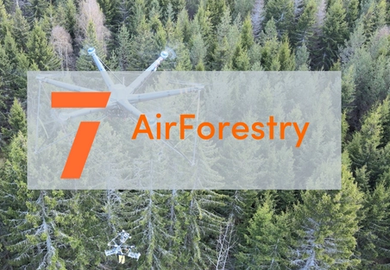AirForestry
Revolutionizing forest thinning with high-capacity drones, reducing forest fire risk and enhancing the forest’s sequestration capacity
What is the Challenge?
Despite enhanced energy efficiency investments, the building and construction sector's energy consumption and CO2 emissions have hit an all-time high post-COVID-19. This widens the gap towards the 2050 decarbonization goal. But what if the sector could achieve significant emission cuts by improving energy performance, and reducing the tailpipe emissions, including the carbon footprint of construction?
